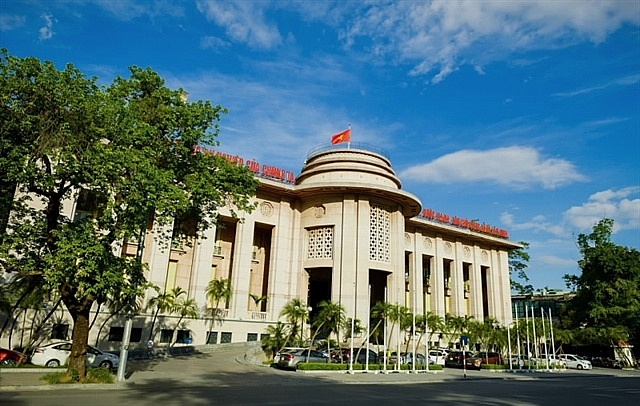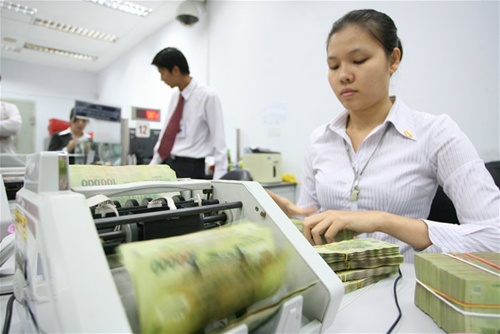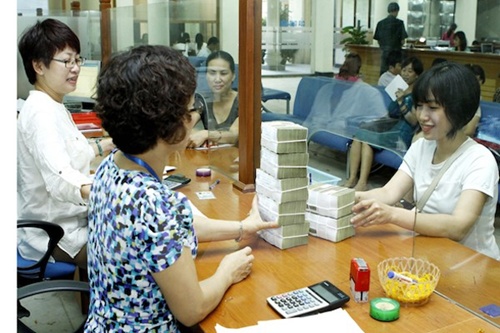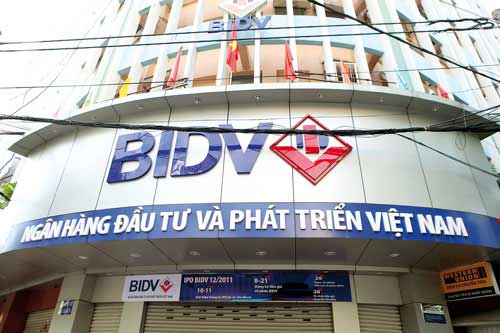PM continues to clarify public debt
PM continues to clarify public debt
Due to time constraint, PM Nguyen Tan Dung directly answered questions raised by seven out of 31 National Assembly deputies at the Legislature’s 8th working session. The following is his answer to the question on public debt situation and management solutions.
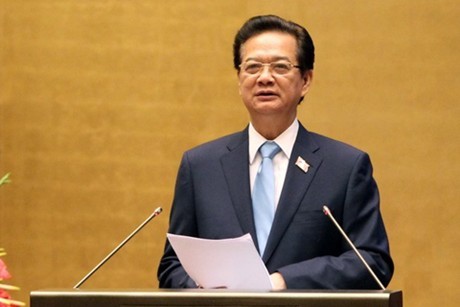
Due to the global financial crisis and economic down turn combined with domestic weaknesses, economic growth slowed down, falling from the annual rate of 7% between 2006 and 2010 to around 5.8%/year in the period 2011 - 2015.
Against that backdrop, the Party and National Assembly put forward the orientation to reduce tax rates in order to support businesses to overcome difficulties while increasing spending on social welfare. Budget collection dipped to 21% from 24.8% meanwhile expenditure demand to ensure social welfare, scheduled pay rise, national defense, and debt payment soared sharply. The ratio of regular expenditure per total budget spending surged from 55% to 64.8%. Spending on social welfare rose about 18% annually. Since 2011, minimum wages have been increased for three times. As a result, the volume for development investment decreased from 25% between 2006 and 2010 down to 18% in the period 2011 - 2015.
To ensure the fulfillment of preset socio-economic targets, the Party and State planned to increase domestic and foreign loans for development investment and socio-economic infrastructure development.
The National Assembly issued the Law on Public Debt Management which covers Government debt, Government-guaranteed debt, and local-level debt. Under Clause 3, Article 8 of the Law on State Budget, the total outstanding borrowing shall not exceed 30% of total annual domestic capital investment of the provincial budget, except for Ha Noi and Ho Chi Minh City.
State-owed enterprises’ debts are mainly official development assistance and preferential loans and over 15% of which are guaranteed by the Government.
The National Assembly issued Resolution 10/2011/QH13 to set the public debt cap of 65% of the gross domestic product (GDP). The Government also introduced its strategy for public debt management for the period 2011-2020, vision to 2030 that details the public debt ceiling (65% of the GDP) and debt payment limit (under 25% of the annual budget revenue).
In the period 2011-2015, the Government issued VND 335 trillion worth of Government bonds (US$15,95 billion) compared to VND 250 trillion in the five preceding years. The Government also sped up disbursement rate of official development assistance, preferential and guaranteed loans for development investment and essential socio-economic infrastructure development. As a result, public debt leapt from 51.7% GDP in 2010 to 60.3% by the end of 2014 and around 64% by the end of 2015. The public debt still remains below the safety cap approved by the National Assembly.
On the other hand, Viet Nam has become a low middle-income country, thus the ratio of official development assistance and preferential loans with long-terms and low interest rates have gradually fallen. The ratio of domestic debt, mainly short-term Government bonds, increased to 54.5% in 2014 from 40.3% in 2010, leading to higher repayment pressure.
Over 98% of public debt was directly channeled to infrastructure projects and many of which have been put into operation, contributing to investment attraction, economic growth and transformation.
However, public debt and repayment pressure are high. Low investment efficiency, corruption and wastefulness are still serious. Budget structure is not healthy and regular expenditure augments quickly, the volume of development investment shrinks and overspending is still high, leading to public concern.
In order to fix the problems, the Government will focus on the following measures in the time to come:
- Strictly manage public debt, especially new loans and strive bring the public debt ratio down to 60.2% by 2020 and Government debt to around 46.6% compared to the regulatory rate of 55% GDP. The Government will set aside around 20% of the budget for repaying loans (the regulatory ceiling is 25%).
- Public debt will only used for development investment and essential socio-economic infrastructure development as planned. The Government will seriously review and approve the list of projects using loans acquired by the Government and local authorities; step up inspection and supervision of loan use to ensure investment efficiency and quality of projects; and proactively prevent and strictly handle wrongdoings, corruption and wastefulness.
- Promptly restructure public debt and reduce repayment pressure. All new loans, including rescheduled ones, must be at least five-year term.
- External debt is expected to increase to 46% GDP by 2020 from 39.9% by the end of 2014 (the regulatory ceiling is 50%). The amount of foreign debt payments due in 2014 accounts for 25.9 percent of exports of goods and services, the Government will task the State Bank of Viet Nam to keep the figure below 25% since 2015 onwards.
- Gradually adjust budget structure towards increasing the ratio of domestic budget collection to 80% of the total budget revenue and investment ratio to 25-30%; keep overspending rate at around 4% GDP by 2020.
- Review and improve institutions, amend and supplement the Law on State Budget, Law on Public Debt Management, Strategy on public debts and national foreign debts, and Program on medium-term public debt management.
- Improve loan effectiveness. New projects will be strictly selected, assessed and verified to ensure investment effectiveness and repayment capacity.
- The Government will only guarantee loans for urgent and key national level projects.
- Local authorities and State-owned enterprises must be active in arranging sources for repayment and intensifying supervision and control of loan use.


